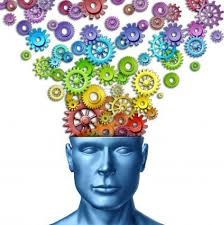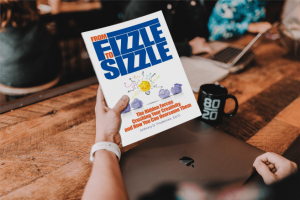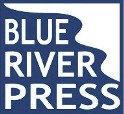Creative Minds
A Regular Column by Anthony D. Fredericks
Insights on the Creative Process
 We all aspire to be creative individuals. Unfortunately, the concept of creativity is something often shrouded in secrecy, wrapped in myths, and subject to much misunderstanding. In this article, I’ll address some of the most pressing questions about creativity and why it can be a natural and normal part of your everyday activities.
We all aspire to be creative individuals. Unfortunately, the concept of creativity is something often shrouded in secrecy, wrapped in myths, and subject to much misunderstanding. In this article, I’ll address some of the most pressing questions about creativity and why it can be a natural and normal part of your everyday activities.
- What is one of the biggest misconceptions about creativity?
One of the most persistent illusions about creativity is that it strikes when least expected (the Eureka! myth). Like a bolt of lightning, creative thoughts come “out of the blue” and we have an immediate answer to a most perplexing challenge. Truth be told, real creativity requires regular and daily practice.
- What is the biggest barrier to a creative life?
When it comes to matters creative, we frequently compare ourselves to creative giants – those individuals who are celebrated for their creative discoveries, inventions, or contributions: Georgia O’Keefe, John Steinbeck, Steven Spielberg, Elton John, Jane Goodall, and Misty Copeland are all creative icons. As a result, we tell ourselves that we’ll never achieve their creative greatness. The unfortunate consequence of this thinking is that we significantly diminish our individual creative potential.
- How can I be more creative?
There is compelling psychological evidence that we each select one of two mindsets to govern our lives. The first, the fixed mindset, is an internal belief that our talents and abilities are fixed and unchanging – unchangeable and unmovable. Those of us with a growth mindset, however, believe that our abilities can be improved with effort and practice. We work to improve ourselves – not prove ourselves – striving to overcome any handicaps or shortcomings and pushing ourselves into new areas ripe for exploration and discovery. As you might imagine, embracing the growth mindset leads to more creativity.
- Are there some easy ways to boost my creativity?
Yes, here are four easy-to-implement strategies:
- Daydream. According to recent psychological research, the time we spend engaged in meaningful daydreaming and the time we spend in thinking about fantastical alternative worlds frequently leads to new inspiration and renewed creativity.
- Walk. Researchers at Stanford University have conclusively proven that people are more creative during and after a walk than they are sitting down. Their study proved that the more we incorporate walking into our daily activities, the more creative ideas we are able to generate.
- Nature. A stroll through a meadow, a bicycle trip through a local park, or a venture to a lake, are all valuable experiences that enhance personal creativity. You’ll begin to see how nature has solved some unique and distinct “challenges” (e.g. the design of a spider web, the splay of roots at the base of a tree). Nature’s creativity stands as an example of how “challenges” are met in several unique ways.
- Play. The overriding consensus from the research is that play – even in our adult years – is a balm to our creative spirit. It underscores the processes important in looking at the world with a different eye – examining possibilities – not because they are right or wrong, but just because they are possibilities. As a result, we loosen up our thinking to tackle myriad challenges.
__________________
 Dr. Anthony D. Fredericks is an award-winning author of more than 170 books, including From Fizzle to Sizzle: The Hidden Forces Crushing Your Creativity and How You Can Overcome Them. He also pens a regular blog for Psychology Today.com (https://www.psychologytoday.com/us/ contributors/anthony-d-fredericks-edd)
Dr. Anthony D. Fredericks is an award-winning author of more than 170 books, including From Fizzle to Sizzle: The Hidden Forces Crushing Your Creativity and How You Can Overcome Them. He also pens a regular blog for Psychology Today.com (https://www.psychologytoday.com/us/ contributors/anthony-d-fredericks-edd)
